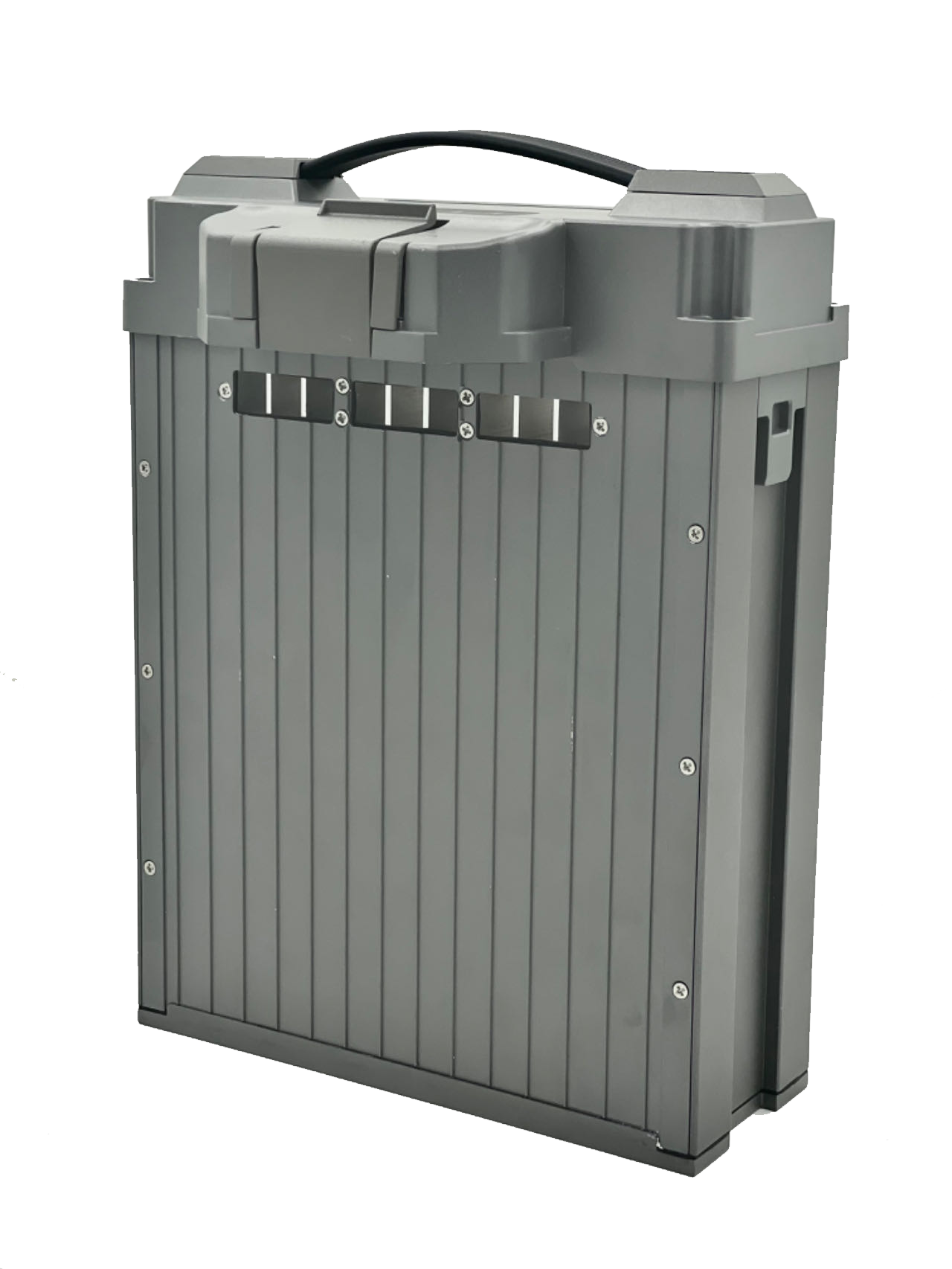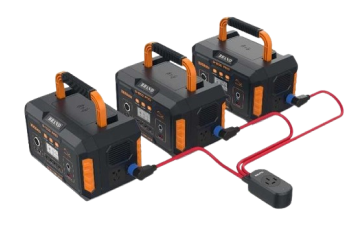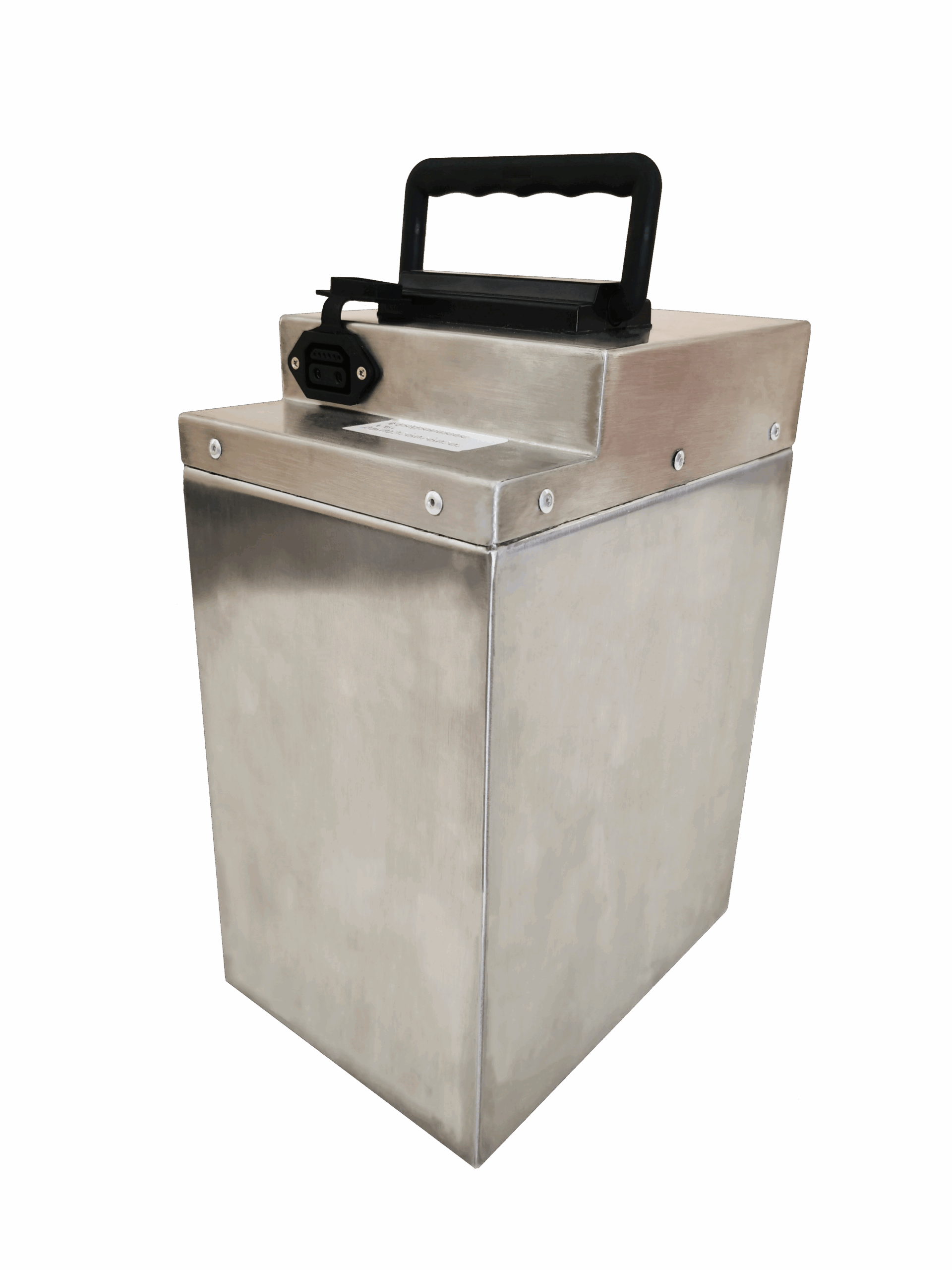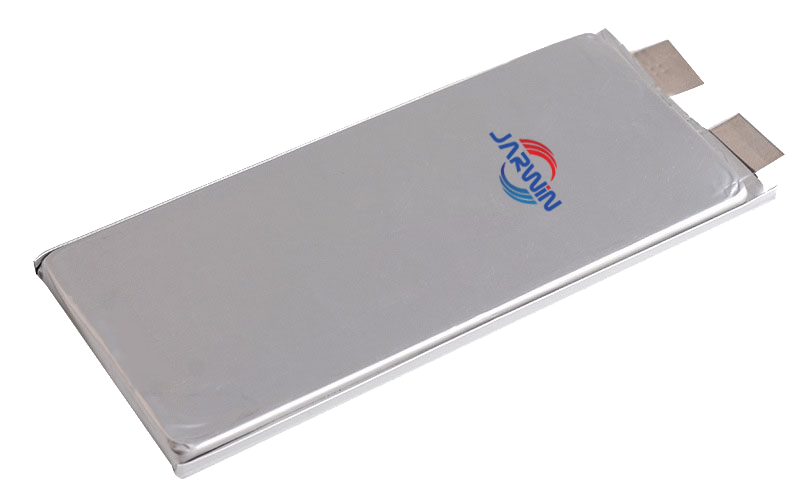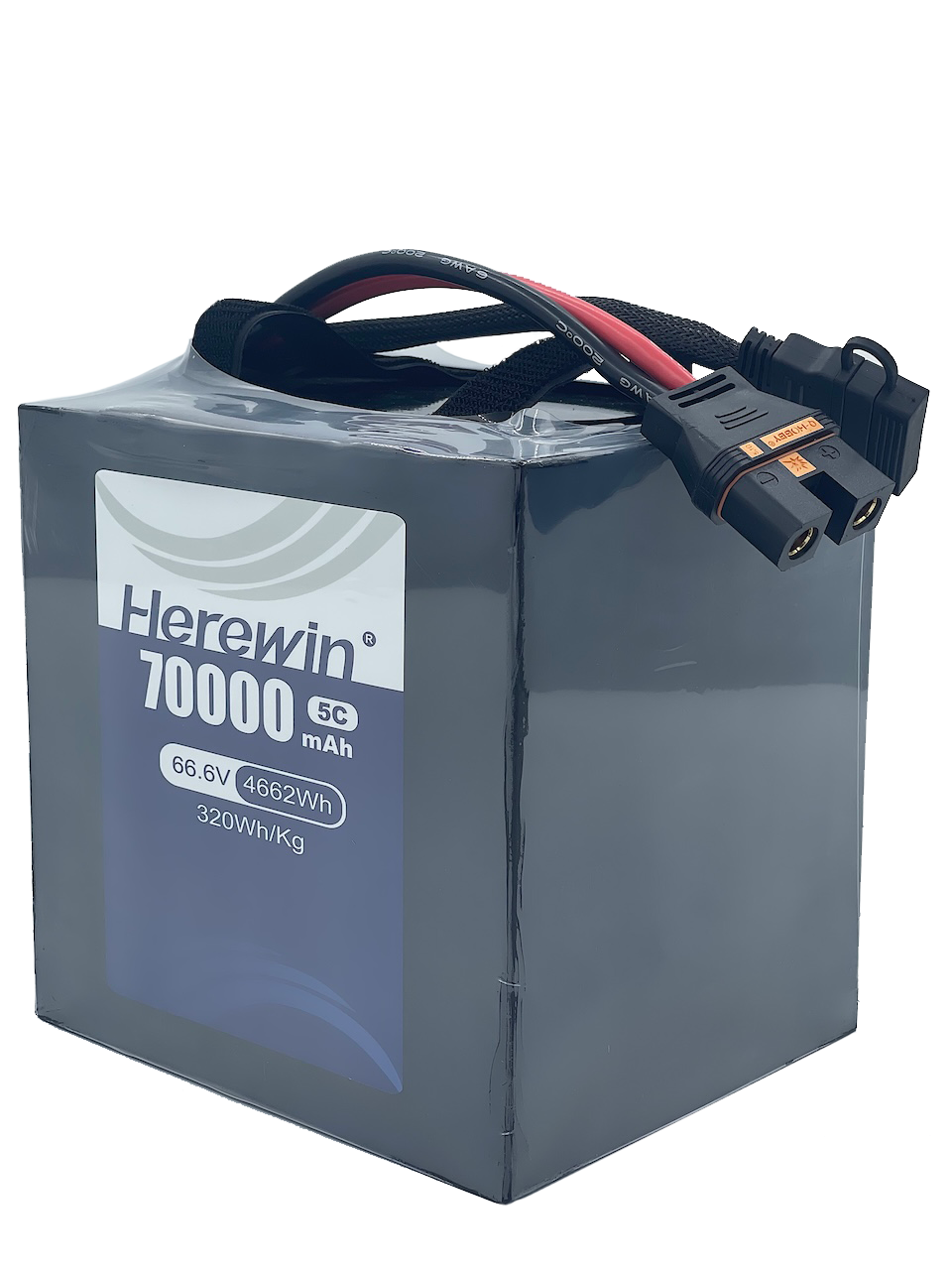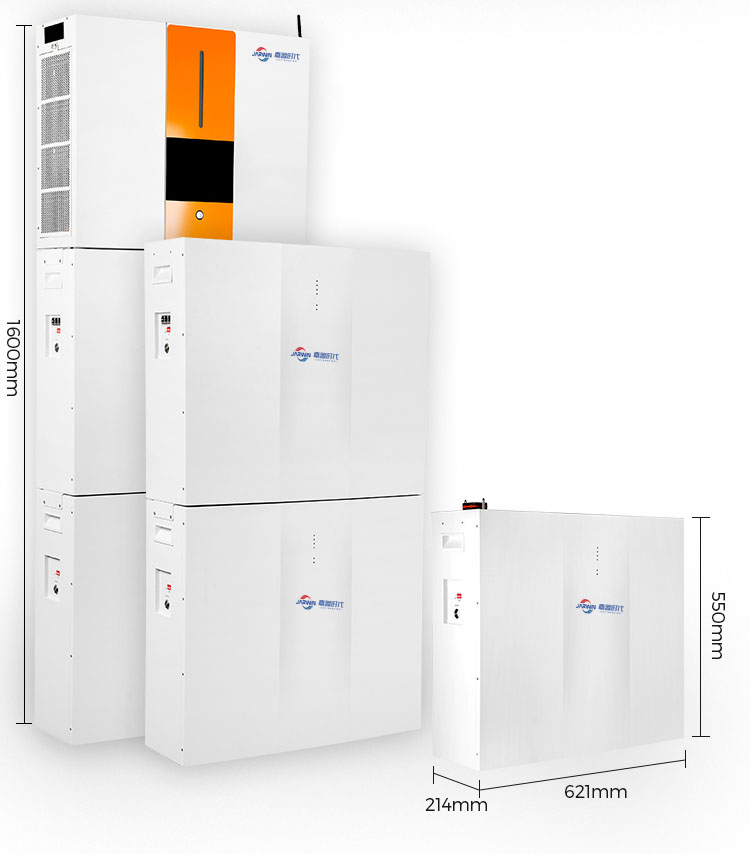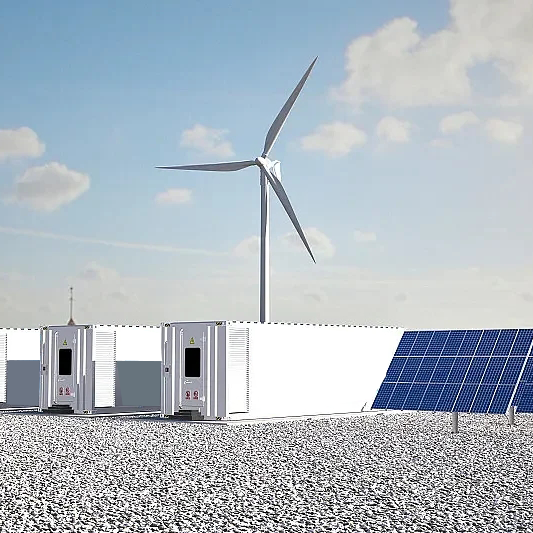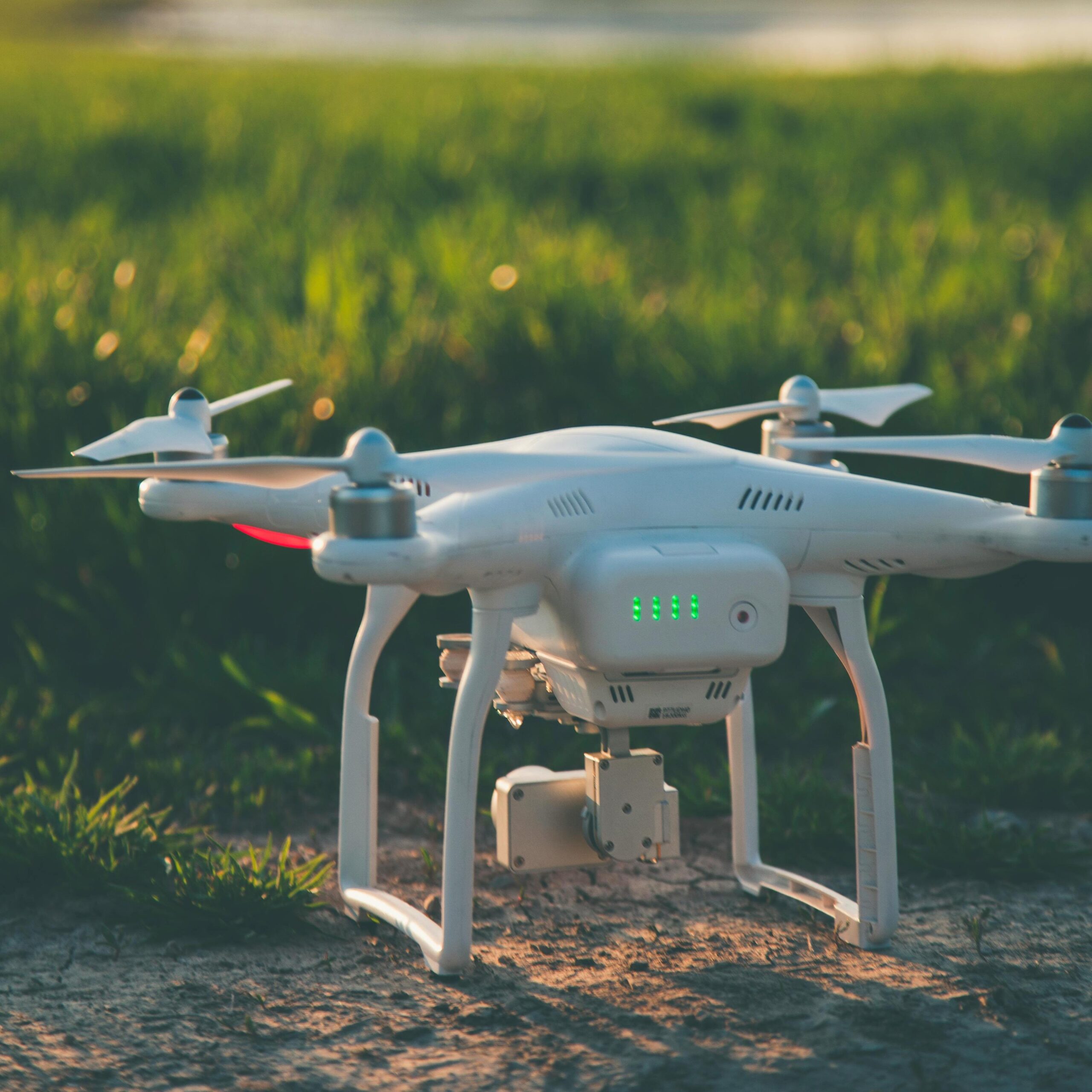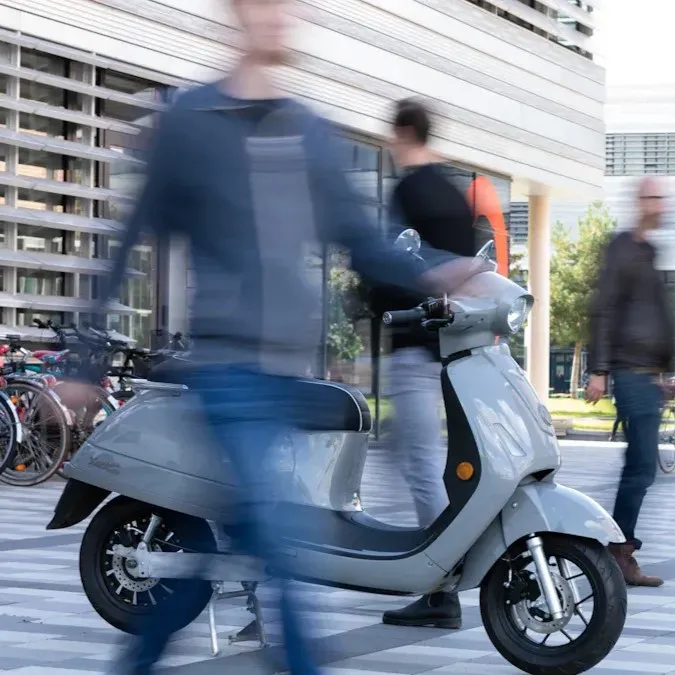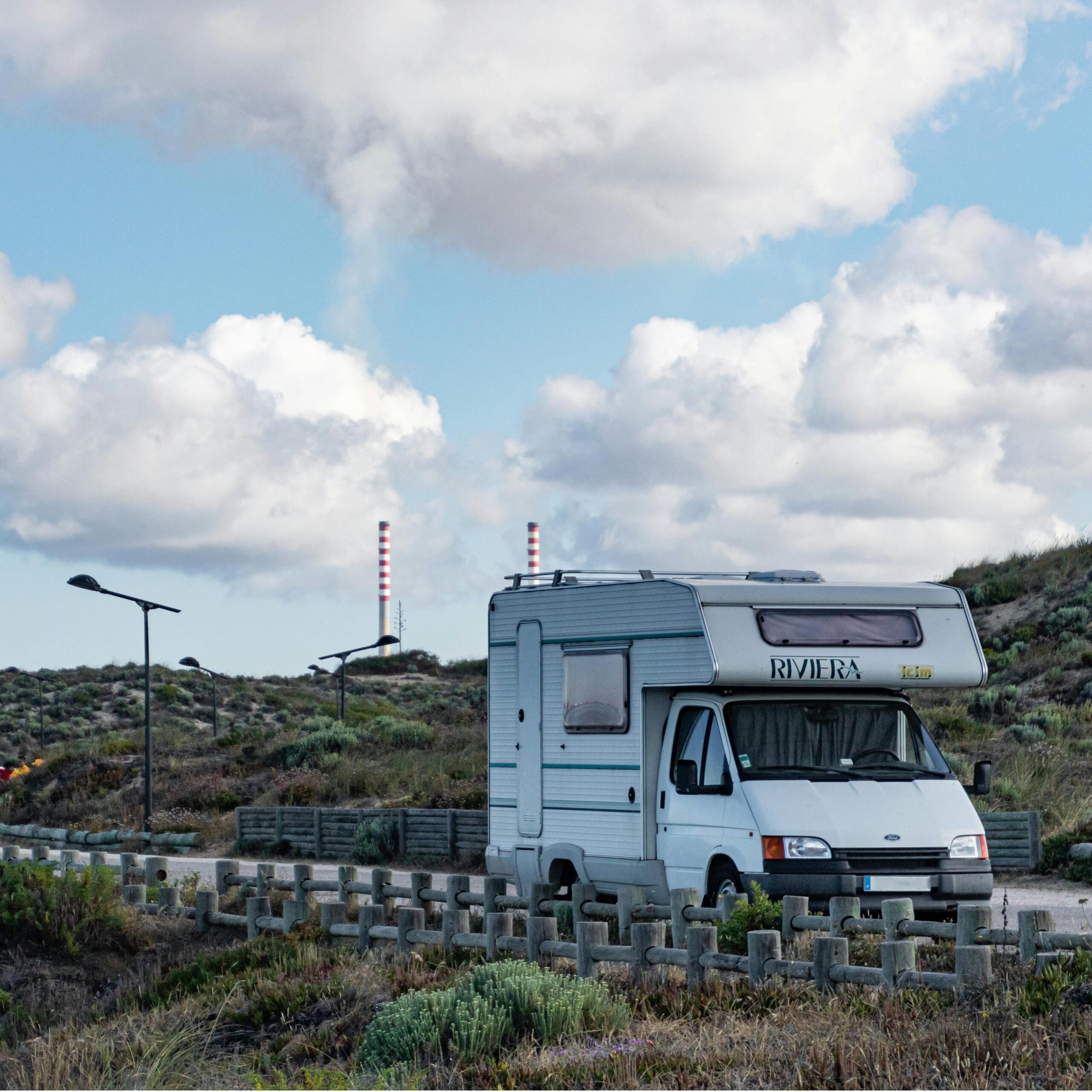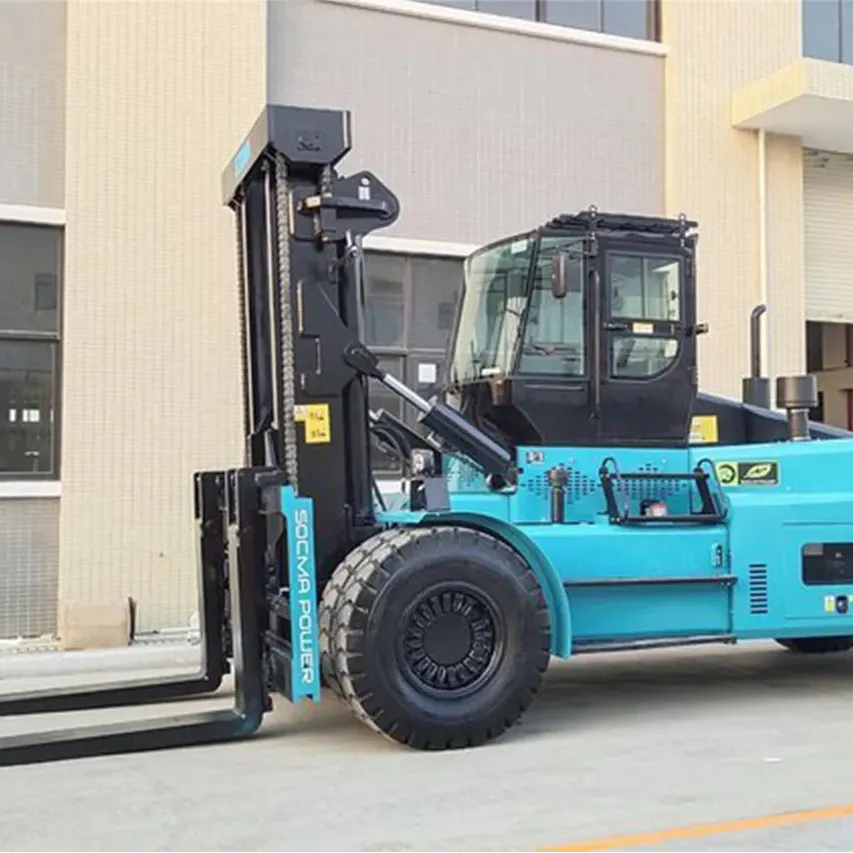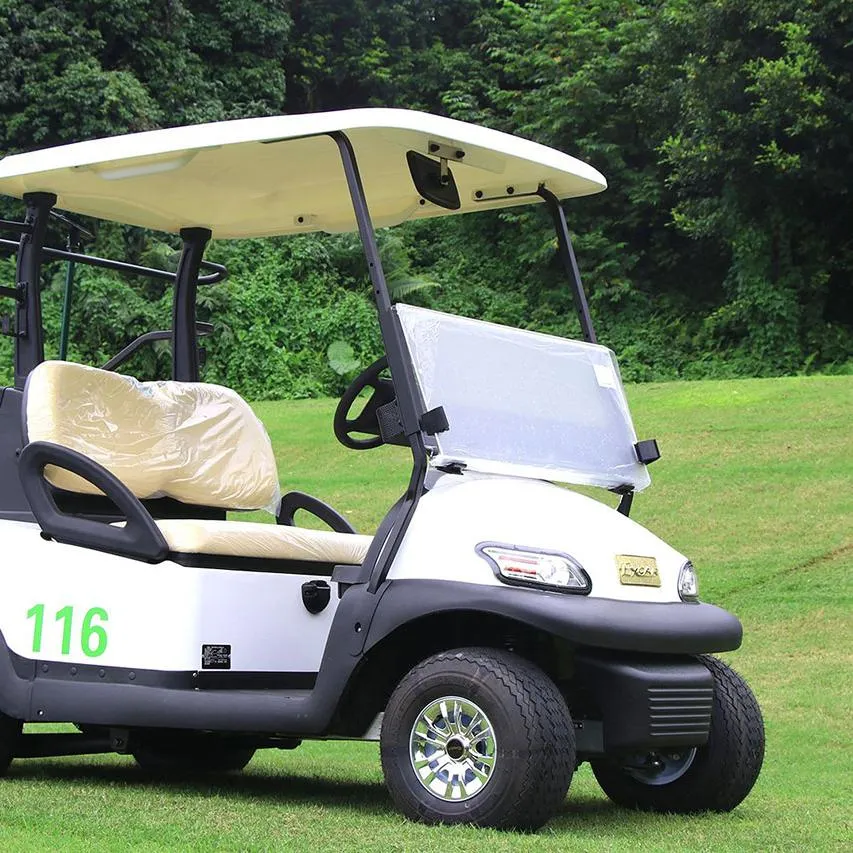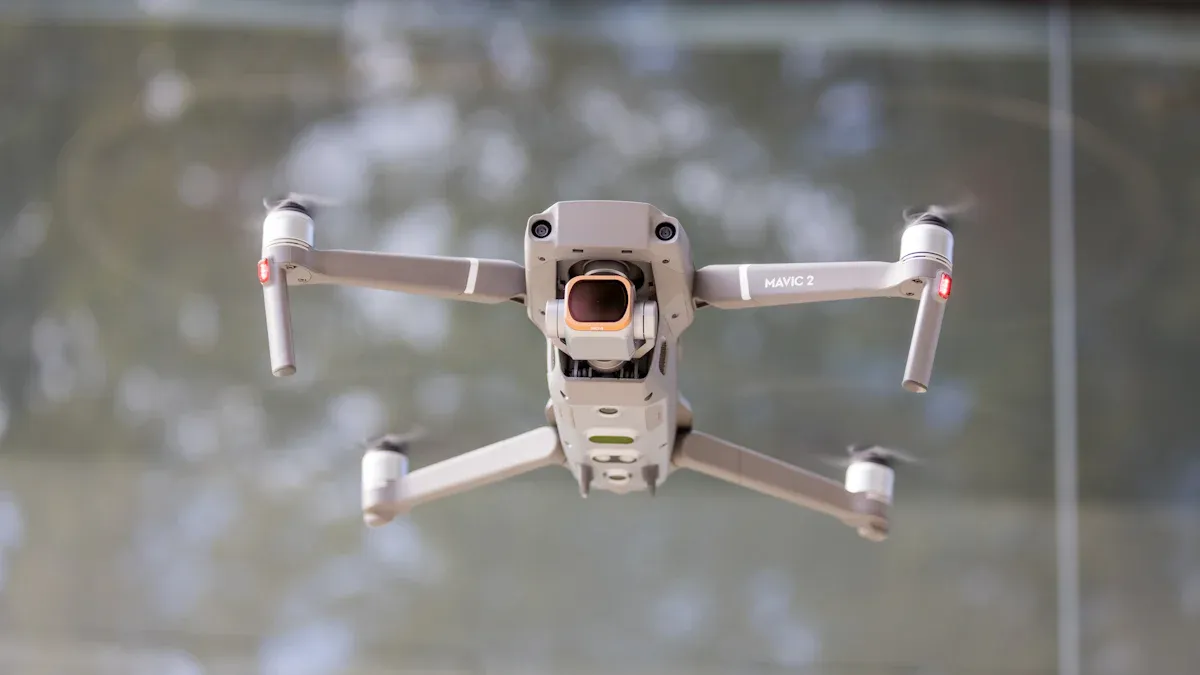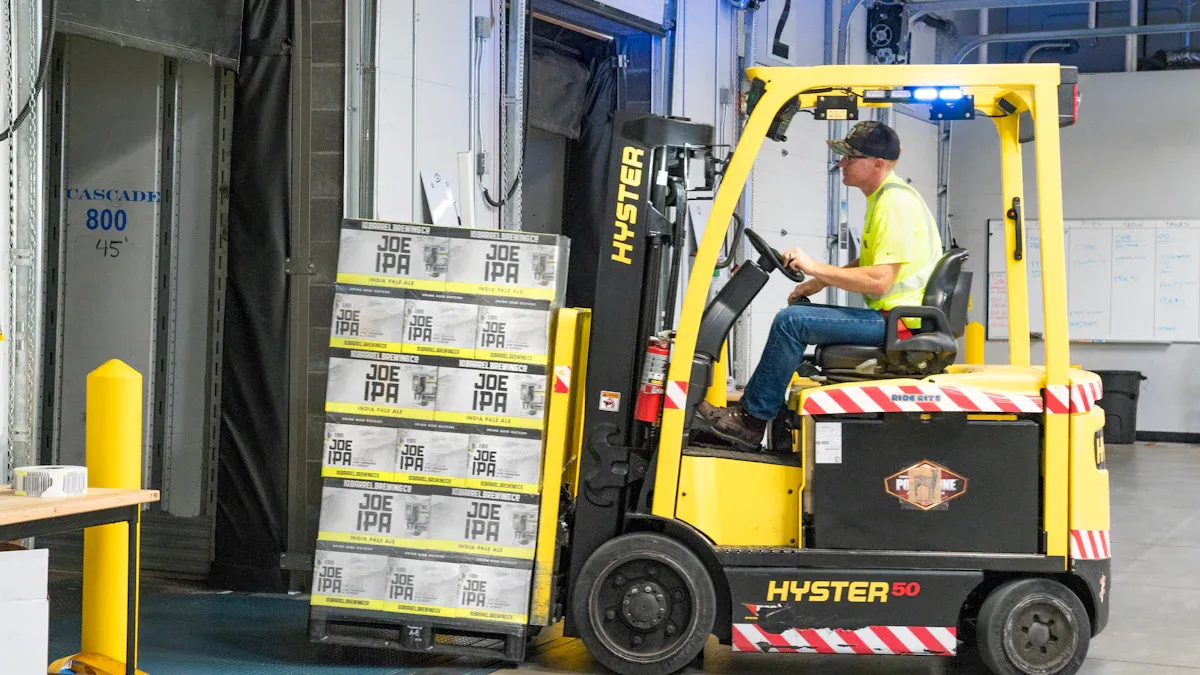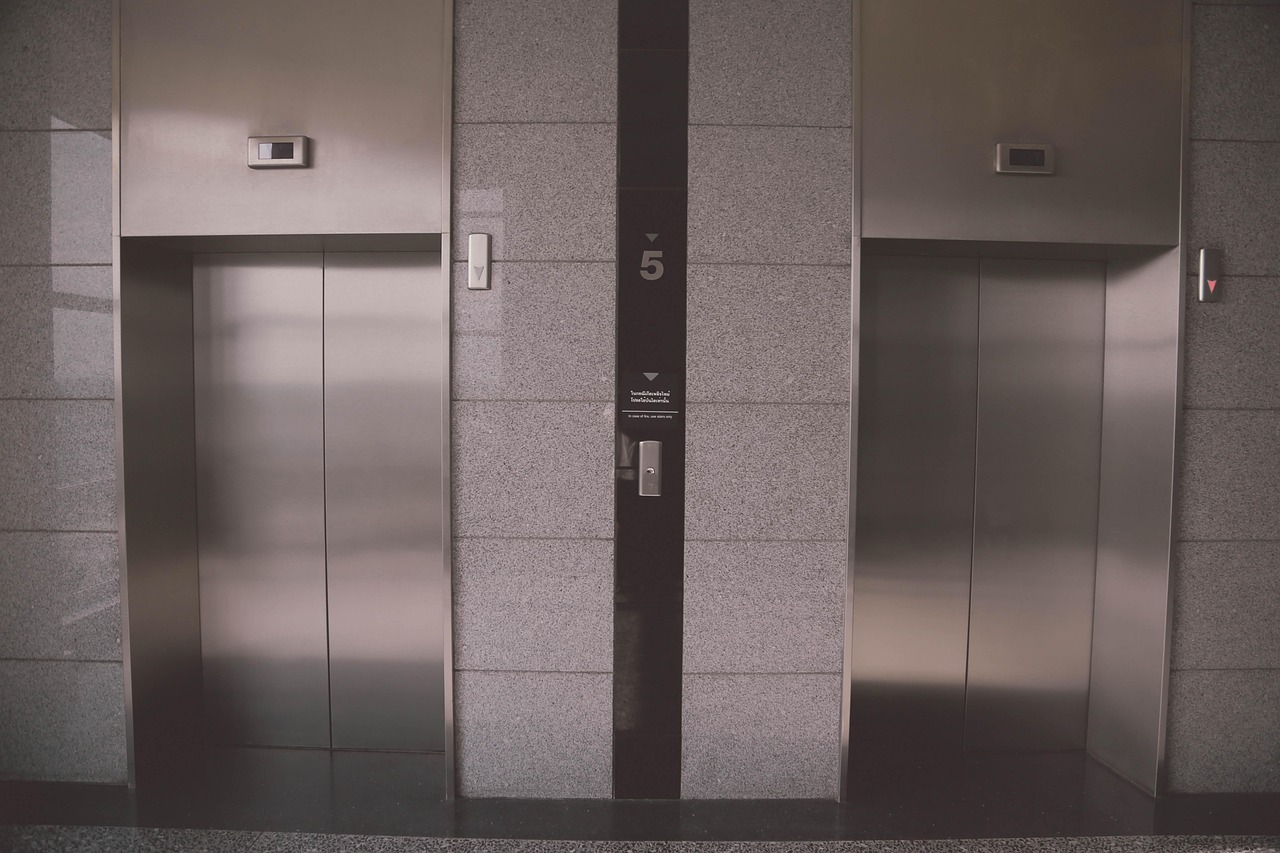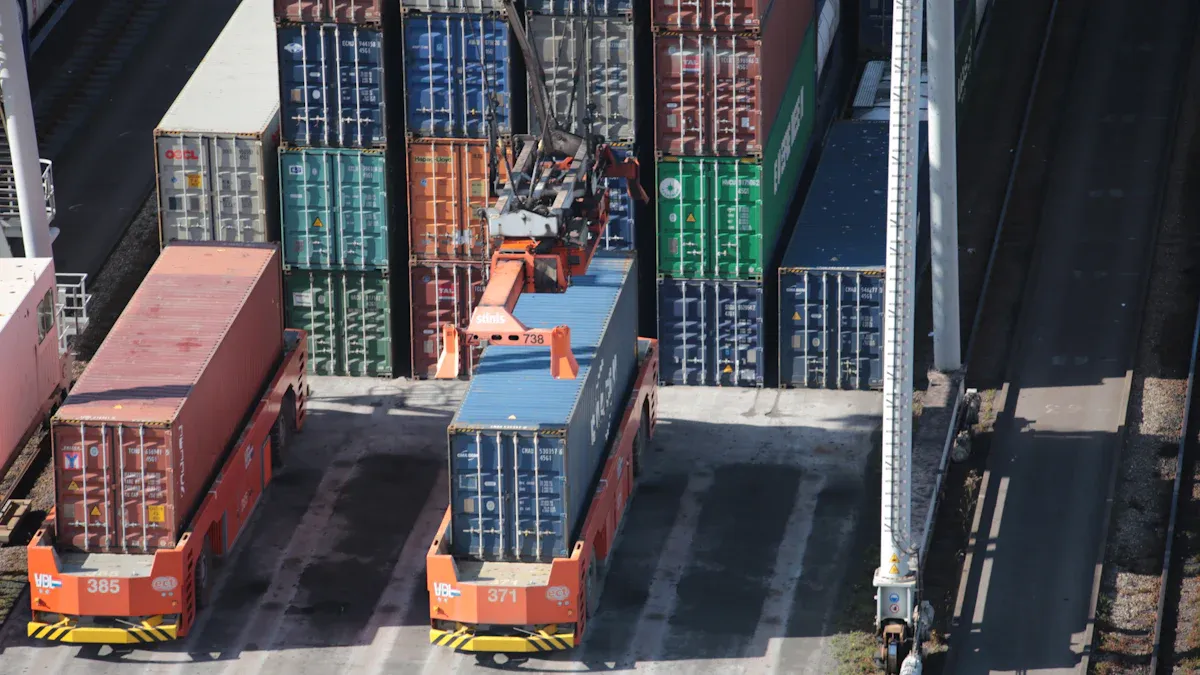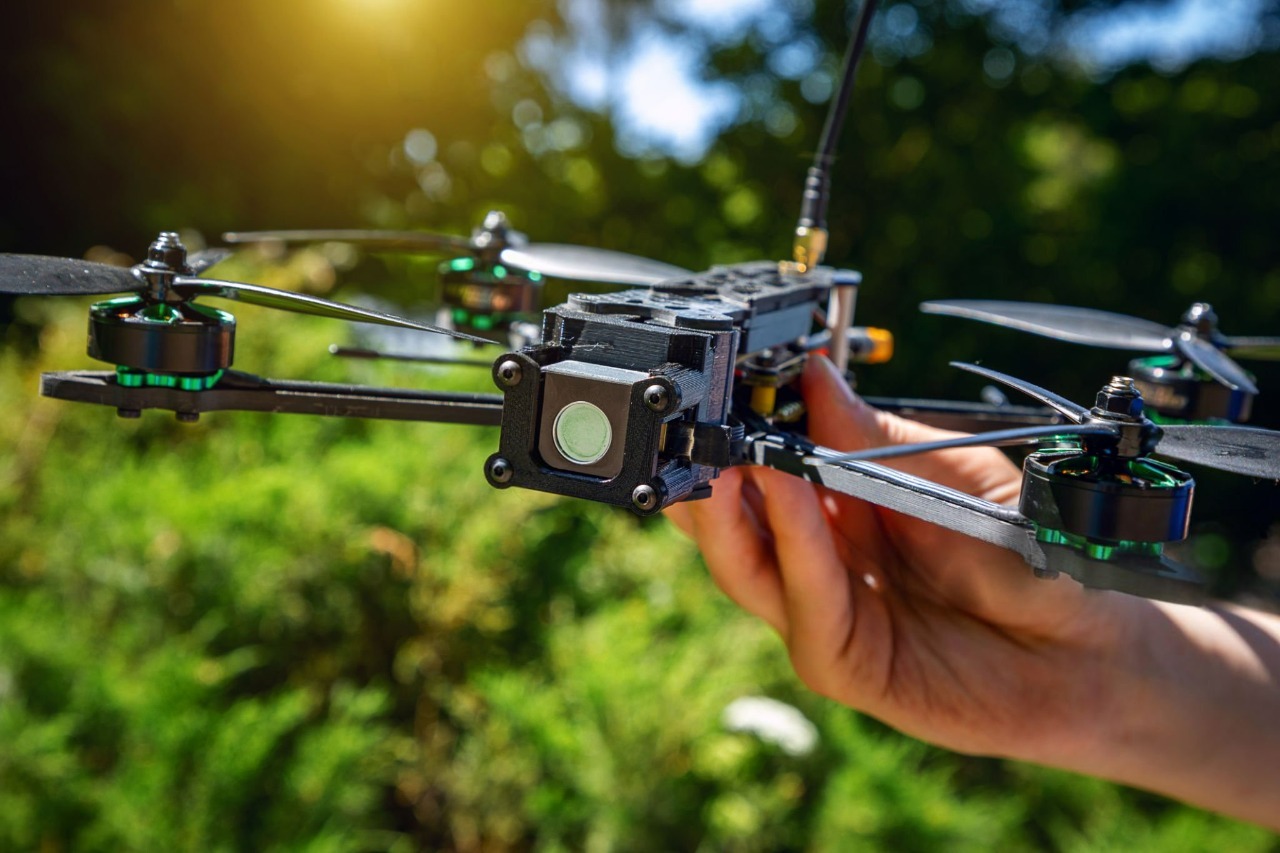
To pick the best battery solution for your FPV drone, you need to consider battery type, capacity, voltage, discharge rate, and weight. The best battery solution provides your drone with extended flight time and ensures safety. It also enhances your drone’s overall performance. By choosing the right battery solution tailored to your needs, your drone can fly longer and operate seamlessly with its components. Trusted brands like hierwinpower offer the best battery solution to help you get the most out of your drone.
Wichtigste Erkenntnisse
Pick the best battery for how you fly. Use LiPo if you want fast racing or freestyle. Use Li-ion if you want longer flights and more safety. Use semi-solid-state if you fly for work or as a pro.
Make sure the battery’s capacity, voltage, and discharge rate fit your drone. This helps your drone fly longer and work better.
Always check if the battery fits your drone’s size and weight. Make sure the voltage and connector type are right. This stops damage and helps your drone work well.
Charge and store your batteries the safe way. This keeps your batteries healthy and stops accidents.
Choose brands you trust, like herewinpower. They have safe and reliable batteries. They also give good help and let you pick custom options.
Best Battery Solution Types
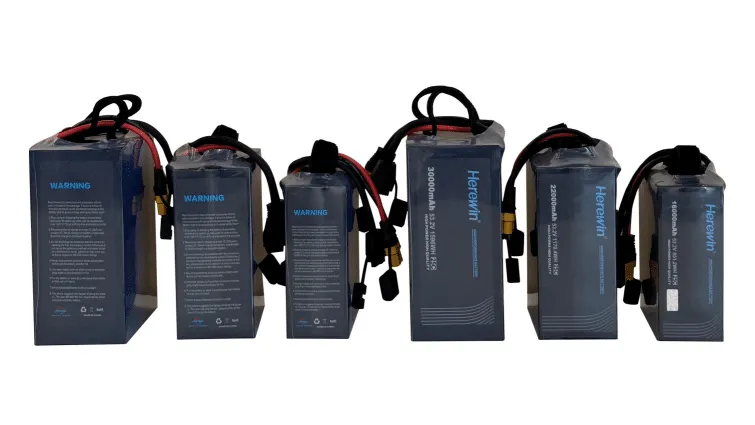
LiPo vs Li-ion
LiPo and Li-ion batteries are the top picks for fpv drone batteries. LiPo batteries let your drone speed up fast and turn quickly. They are light and can be made in many shapes. This makes them great for racing and freestyle drones. But LiPo batteries do not last as long. They can also swell or get unsafe if you do not use them right.
Li-ion batteries last longer and are safer. They have a metal case and safety circuits. These batteries store more energy, so your drone can fly longer. They are heavier and do not give as much quick power. This makes them better for long flights or smooth video drones.
Merkmal | LiPo Batteries | Li-ion Batteries |
|---|---|---|
Discharge Rate | Very high (up to 100C), ideal for rapid power | Lower discharge rate, less voltage drop under load |
Weight & Form Factor | Lightweight, flexible shapes for custom fits | Heavier, rigid cylindrical/prismatic shapes |
Lifespan | Shorter (200-500 cycles) | Longer (500-1000 cycles) |
Sicherheit | Prone to swelling, combustion risk | Better safety with metal casing and protection circuits |
Energy Density | Lower energy density | Higher energy density |
Tip: Pick LiPo if you want fast flights. Pick Li-ion if you want longer flights and more safety.
Semi-Solid-State Options
Semi-solid-state batteries are a new choice for fpv drone batteries. These batteries are safer and last longer. They work well in tough weather and help stop sudden problems. You might use these batteries for work drones or long trips. They cost more, but they are worth it for important jobs.
Semi-solid-state batteries are best for inspection, delivery, or commercial FPV drones.
LiPo batteries are best for racing and freestyle drones.
Semi-solid-state batteries help prevent downtime and keep your drone safe.
Herewinpower Drone Battery Features
Herewinpower makes advanced drone batteries for all FPV drones. Their batteries use special materials for more energy and less weight. You get up to 100C discharge rates, which is great for racing. Herewinpower batteries work in hot or cold weather and last a long time. You do not need to buy new ones often. You can also get custom batteries for your drone. Herewinpower has many cell counts and chemistries, like LiPo, Li-ion, and semi-solid-state. Their batteries are safe, strong, and work well for every flying style.
Key Factors in Selecting a Drone Battery
Picking the right Drohnen-Batterie is very important. It helps your FPV drone fly longer and work better. You need to think about battery capacity, voltage, discharge rate, size, and weight. These things should fit your drone and how you like to fly. Let’s look at each part so you can pick the best battery.
Capacity and Voltage
Battery capacity shows how much energy your battery can hold. It is measured in milliamp hours (mAh). A bigger number means more energy and longer flights. But bigger batteries are heavier. Heavy batteries can slow your drone and make it harder to turn. You need to find a good balance for your flying.
Bigger batteries like 2200mAh or 3000mAh last longer but weigh more.
Smaller batteries like 1300mAh or 1500mAh are lighter and good for racing, but flights are shorter, about 3–5 minutes.
For long flights or smooth videos, pick bigger batteries for more time in the air.
Here is a table that shows how battery size changes flight time:
Battery Capacity (mAh) | Estimated Flight Time (minutes) |
|---|---|
4500 | 10–15 |
9000 | 10–16 |
10000 | 12–18 |
11000 | 13–18 |
16000 | 15–20 |
Voltage is also important. You see this as the “S” number on your battery, like 4S or 6S. Voltage changes how fast your motors spin and how much power they give. More voltage means more power, but also more weight and cost. You must use the right voltage for your drone’s motors and ESCs or you could break them.
Battery Cell Count (S) | Nominal Voltage (V) | Typical Uses | Impact on Motor Performance | Trade-offs |
|---|---|---|---|---|
3S | 11.1 | Medium-sized drones, moderate tasks | Balanced power output, moderate motor speed and thrust | Lighter, more affordable, less power |
4S | 14.8 | High-performance FPV drones, racing | Higher motor RPM and thrust, improved efficiency and throttle response | Heavier and costlier than 3S |
6S | 22.2 | Professional and race drones | Significantly higher motor speed and thrust, smoother throttle control | Heaviest, most expensive, requires matching motor KV and ESC ratings |
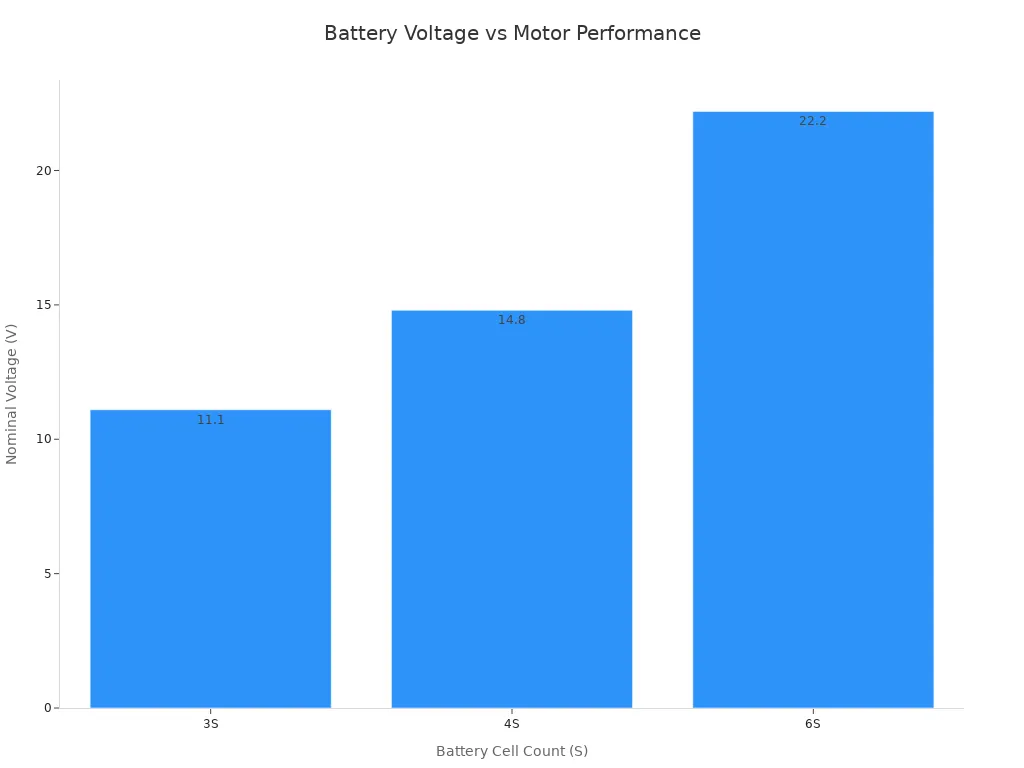
Tip: Always look at your drone’s manual to find the best voltage and capacity.
Herewinpower’s F-Volt FPV Battery Series has many sizes and voltages. They have packs like 6S1P 22.2V 5000mAh. These batteries help you fly longer and keep power steady for good performance.
Discharge Rate (C Rating)
The discharge rate, or C rating, tells how fast your battery can give out energy. This is important for drones that need quick moves or race. If the C rating is too low, your drone may not get enough power. This can even hurt the battery.
The C rating shows the most current the battery can give. For example, a 5100mAh battery with a 10C rating can give up to 51 amps.
Most FPV drones use 20–50 amps when flying, but can go up to 100–150 amps for short times.
High C ratings help your drone do fast tricks and quick moves.
If the C rating is too high, the battery is heavier and costs more, which can lower flight time.
Herewinpower’s F-Volt FPV Battery Series can go up to 100C. This is great for racing and freestyle drones that need fast power. The Battery Management System (BMS) keeps your battery safe from too much current during hard flights.
Weight and Size
Weight and size change how your drone flies. Heavy batteries let you fly longer, but your drone will be slower and less quick. Light batteries make your drone faster and easier to turn, but you will not fly as long.
LiPo batteries are liked because they hold lots of energy and charge fast.
When battery weight goes up, your drone is less quick, but flies longer.
You need to match battery size and weight to your drone’s frame and flying style.
Herewinpower makes batteries with special materials to keep them light and full of energy. Their batteries work in hot or cold weather and last for many flights. You get strong power every time you fly.
Note: Always check your drone’s size and weight limits before you buy a battery.
If you know these key things about drone batteries, you can pick the best one for your drone and flying style. Herewinpower batteries give you strong power, longer flights, and good safety. This makes them a great choice for FPV pilots who want the best battery life and trust their gear.
FPV Drone Batteries and Compatibility
Matching to Drone Electronics
It is important to use the right battery for your drone’s electronics. If you pick the wrong battery, your drone might not work or could break. Here are some things you should check:
Make sure the battery voltage matches your drone’s motor and ESC voltage. Using the wrong voltage can damage your drone.
Pick a battery with enough capacity (mAh) for your drone’s weight and flight time.
The battery’s discharge rate (C rating) must give enough power for your motors, especially if you fly fast or do tricks.
Choose an ESC with an amp rating that is 10–20% higher than your motor’s top current. This helps your drone stay safe when it needs extra power.
You can use online calculators to help match your battery, ESC, and motors.
Herewinpower can test if a battery works with your drone. They also make custom batteries for different needs. You can get a battery that fits your drone, whether you fly for fun or work.
Connector Types and Fit
The connector on your battery is important for safety and how well your drone works. The right connector makes sure your battery fits and powers your drone. Here are some common connectors:
XT60 connectors are used for medium drones with 3S–6S batteries. They handle high power and fit most FPV drone batteries.
JST-XH connectors are for micro drones. They let more power flow than smaller connectors, which keeps your drone safe.
Balance leads, often JST-XH, let you charge each cell and check voltage. This helps your battery last longer.
Tip: Always use connectors that fit your drone’s power needs. This helps stop overheating or bad connections.
Herewinpower can make special connectors and battery sizes. You get a battery that fits your drone, no matter what model you have.
Use Case Scenarios
FPV drone batteries come in many types for different flying styles. The table below shows how battery needs change for each type of flying:
Use Case Scenario | Typical Battery Voltage | Capacity (mAh) | Discharge Rate (C) | Key Battery Needs |
|---|---|---|---|---|
Racing / Freestyle | 4S or 6S | 60C–100C+ | High power for tricks, moderate size for agility | |
Long-Range Drones | 6S | 8000–10000 | 25C–30C | Big capacity for long flights, lower C rating |
Cinewhoops / Micro | 1S or 2S | Lower | Lower | Light weight, small size for tight spaces |
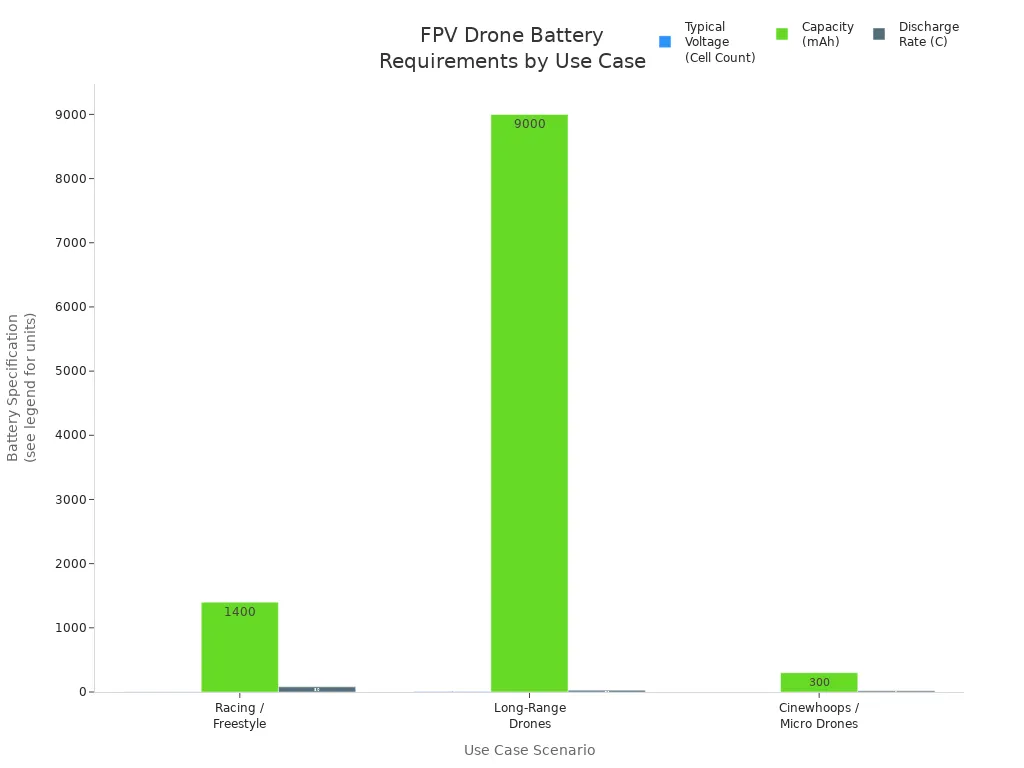
Herewinpower can test if a battery works with your drone and make custom batteries. You can trust your drone to work well, whether you race, film, or explore.
Choosing the Right Drone Battery for Your Flying Style
Every FPV pilot flies in their own way. Some people like to race. Others do tricks or film smooth videos. Some use drones for work. Each way of flying needs a different battery. The right battery helps your drone fly better and longer. Herewinpower has batteries for every style. They have light batteries for speed. They also have big batteries for long flights.
Racing and Freestyle
Racing and freestyle flying need fast moves. Racing drones need batteries that give power right away. Freestyle drones need both power and easy turning. The table below shows what to look for:
Drone Type | Suggested Battery Specs | Key Considerations |
|---|---|---|
Racing | Max speed, high discharge, lightweight | |
Freestyle | 4S/6S LiPo, 1300–1500mAh, 70–100C | Power and agility, balanced for tricks |
Pick a battery with a high C rating for racing. This gives your drone strong power for quick turns. Keep the battery light for better control. Herewinpower’s batteries help you fly faster and longer in races and tricks.
Cinematic and Long-Range
Cinematic and long-range drones need to fly far and steady. These drones use batteries that last a long time. Bigger batteries give more flight time and steady power. The chart below shows how battery life changes for each drone:
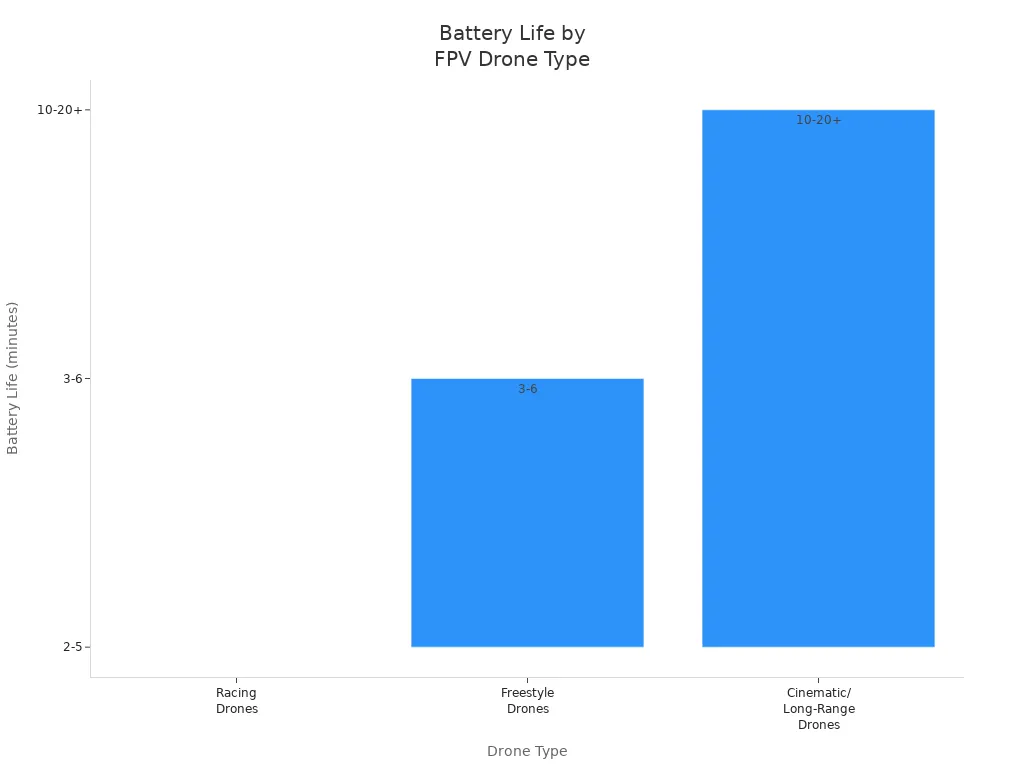
Cinematic drones often use 6S LiPo or Li-ion batteries. These batteries are 3000–8000mAh. This lets you fly longer for filming or exploring. Herewinpower’s big batteries help you film more and fly farther. You get steady power for smooth video and long flights.
Industrial and Professional Use
Industrial and professional drones need safe and strong batteries. These drones are used for jobs like mapping or delivery. They need to fly longer and stay safe. The table below shows what is important:
Importance for Industrial and Professional FPV Drones | |
|---|---|
Voltage (V) | Must match motor needs; higher voltage for heavy lifting |
Capacity (mAh) | Higher capacity for longer flight times, balanced with weight |
Discharge Rate (C-Rating) | High C-rating for power demands |
Weight and Size | Must fit drone and payload limits |
BMS | Ensures safety and battery health |
Pick batteries with smart Battery Management Systems for these drones. Herewinpower’s batteries use safe materials and smart BMS. This helps your drone fly longer and stay safe. These batteries work well in hard jobs and tough weather.
Tip: Always pick a battery that matches how you fly. The right battery gives you longer flights, better flying, and keeps your drone safe.
Drone Battery Safety and Maintenance
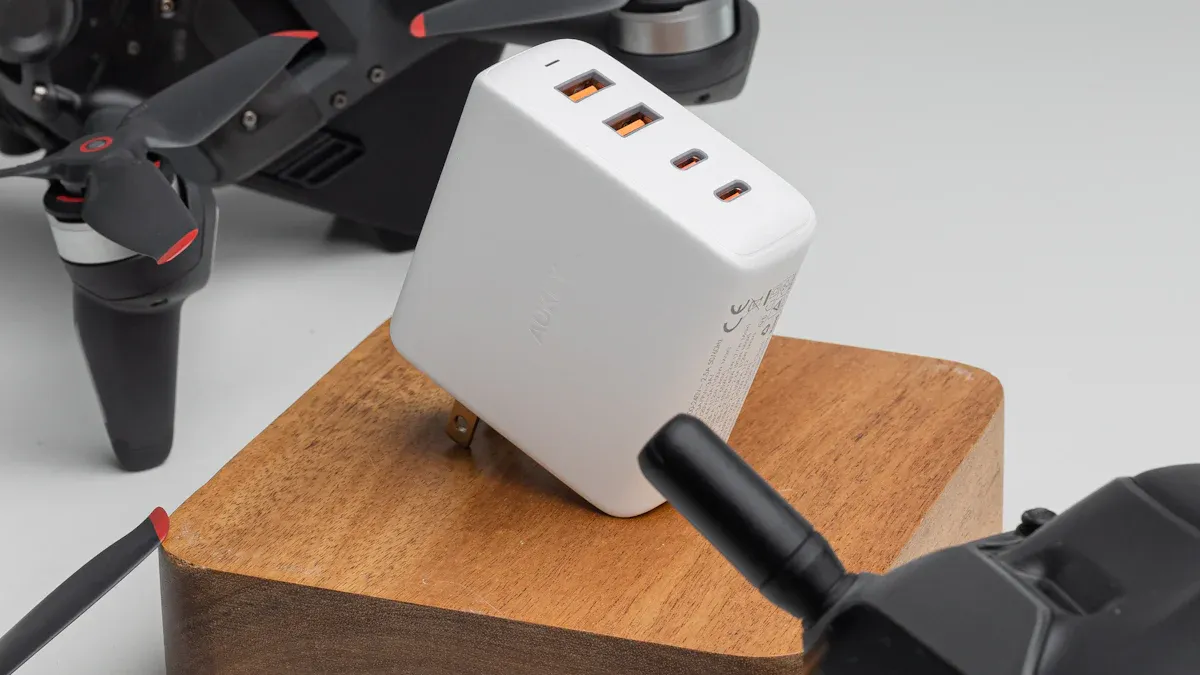
Charging Best Practices
Charging your FPV drone batteries the right way is important. It keeps you safe and helps your batteries last longer. Here are some easy steps to follow:
Always use the charger that the battery maker suggests. This helps stop overcharging or undercharging.
Take the battery off the charger when it is fully charged. If you leave it plugged in, it can get too hot.
Charge your batteries at room temperature, between 22°C and 28°C. Do not charge them in places that are too hot or too cold.
Let your batteries cool down after flying before charging them again.
Try not to use up all the battery power. Land your drone when the battery is below 20%.
Never leave your batteries alone while they are charging. Use a fireproof bag or case to be extra safe.
Look at your batteries for swelling or damage before and after charging.
Tip: Charging your batteries the right way helps them last longer and keeps your drone safe.
Storage and Handling
Storing and handling your drone batteries the right way is important. It helps stop damage and keeps you safe. Here are some simple tips:
Store your batteries at about 3.8 volts for each cell. This helps stop swelling and keeps your batteries healthy.
Keep your batteries in a cool, dry place, away from sunlight and heat.
Use fireproof containers or LiPo-safe bags to store your batteries.
Do not keep batteries fully charged or empty for a long time.
Let your batteries cool to room temperature before you store or charge them.
Check your batteries often for swelling, cracks, or leaks. Throw away damaged batteries the right way.
Use all your batteries in turn so they all stay in good shape.
Storage Tip | Why It Matters |
|---|---|
Store at 3.8V per cell | Stops swelling and lowers fire risk |
Use fireproof containers | Makes storage safer |
Avoid extreme temperatures | Keeps batteries healthy |
Brand Quality and Support
Picking a trusted brand like herewinpower is a smart choice. Herewinpower batteries follow strict safety rules like UN38.3, CE, and RoHS. The company checks every battery for safety, like overcharge, short circuit, and drop tests. Herewinpower uses special materials to lower fire risk and help batteries last longer. You also get good help after you buy, like tech support and battery care tips. This help lets you fix problems fast and keeps your drone safe. When you pick a good brand, you know your battery is safe, works well, and experts can help you.
To get the best battery for your FPV drone, you need to pick the right type, voltage, capacity, and discharge rate. Make sure these match how you fly and what your drone needs. Always check if the battery works with your drone. Look for safety marks and choose brands people trust. Check your batteries before you use them. Store them in a safe place. Try them out by flying your drone. Brands like herewinpower are known for safe and strong batteries. They help you fly without worry.
Remember: Look up info, compare choices, and test batteries before picking one.
FAQ
What is the best battery type for FPV racing drones?
You should choose LiPo batteries for FPV racing drones. LiPo batteries give you high power and fast response. They are lightweight and help your drone move quickly during races.
How do I know if a battery fits my drone?
Check your drone’s manual for battery size, voltage, and connector type. Make sure the battery matches these details. If you use the wrong battery, your drone may not work or could get damaged.
How can I make my drone batteries last longer?
Store your batteries at 3.8V per cell. Charge them with the right charger. Do not drain them completely. Always let them cool before charging again. These steps help your batteries stay healthy.
Why does my battery get warm after flying?
Batteries heat up when they deliver high power to your drone. Fast flying or heavy loads make them work harder. Warm batteries are normal, but very hot batteries may signal a problem.
Can I use any charger for my FPV drone battery?
You should always use a charger made for your battery type. Using the wrong charger can damage your battery or cause safety risks. Look for chargers that match your battery’s voltage and connector.


